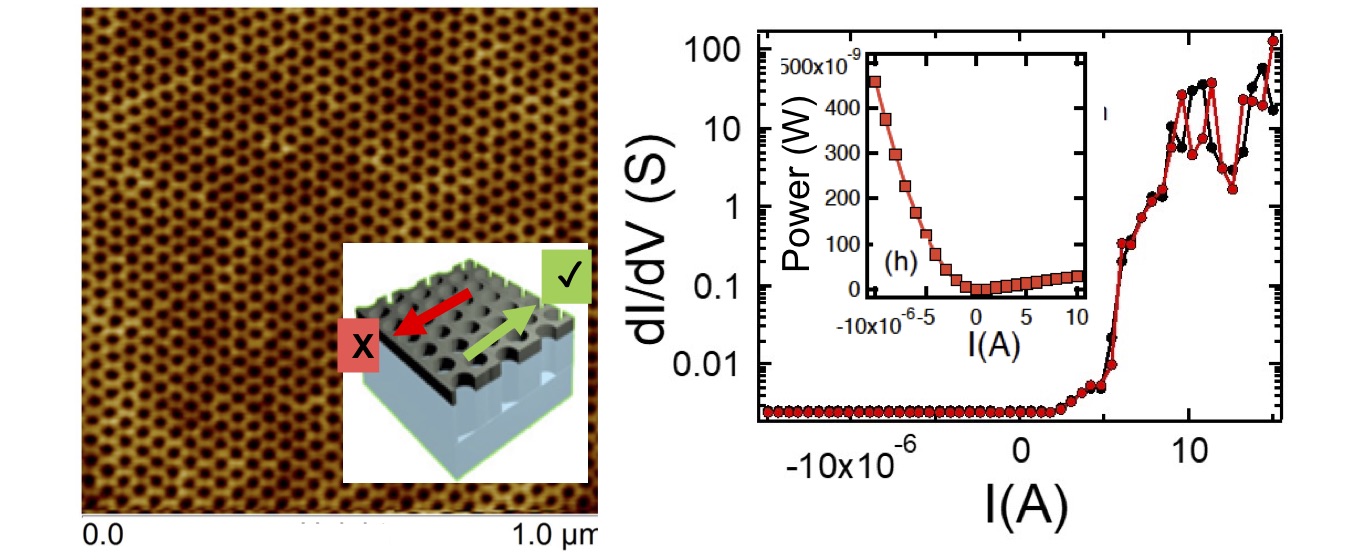By Warren Miller, contributing writer
Battery degradation is one of the consumer’s chief complaints about electronic devices, but a new savior could be on the horizon. A research team from the University of Missouri has applied for a patent for a material that could both extend the life of batteries and reduce the heat that they emit.
The magnetic material itself has a lattice-like structure, similar to a honeycomb. By laying a magnetic alloy over a latticed silicon surface, the new material conducts electrical current in one direction, resulting in significantly less energy dissipation than a standard silicon or germanium diode.

Image source: MU.
“A diode normally conducts current and voltage through the device along only one biasing direction,” said Deepak K. Singh, associate professor of physics and astronomy and principal investigator of the Magnetism and Superconductivity Research Laboratory at UM. “But when the voltage is reversed, the current stops. This switching process costs significant energy due to dissipation or the depletion of the power source, thus affecting battery life. By substituting the semiconductor with a magnetic system, we believed we could create an energetically effective device that consumes much less power with enhanced functionalities.”
This “magnetic diode” could result in new transistors that dissipate far less energy than their predecessors. These transistors could, in turn, result in batteries capable of maintaining a full charge far longer than current commercially available batteries for consumer electronic devices. Heat is also a byproduct of energy dissipation, meaning the less energy dissipated, the less heat discharged. “Although more work needs to be done to develop the end product, the device could mean that a normal 5-hour charge could increase to more than a 500-hour charge,” said Singh.
The research team is already in the process of preparing to take their new design to the marketplace. According to Professor Singh, the new diode could also be used as a de facto on/off switch for systems that operate by increasing or reducing the flow of power through a device, such as closed-circuit cameras or radio frequency attenuators.
In the end, the commercial viability of this new magnetic diode will be all about batteries. Almost everything that we consider essential in our everyday lives runs on batteries these days, and extending battery life is the next frontier in differentiating one smartphone/tablet/laptop from another. Who knows, maybe this technology could lead to extending the life of batteries in electric vehicles.
Advertisement
Learn more about Electronic Products Magazine





